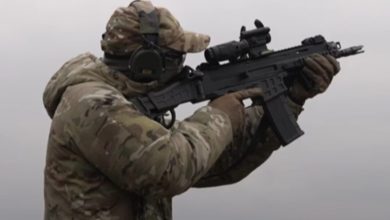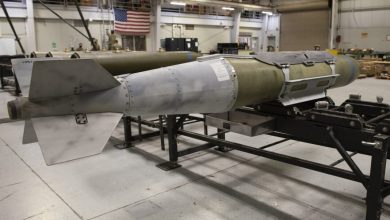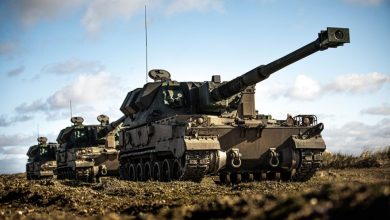Japan fires Type-12 anti-ship missile for first time in Australia

In a sign of growing defense cooperation with allies and partners, the Ground Self-Defense Force (GSDF) on Saturday test-fired its Type-12 anti-ship missile for the first time in Australia as part of this year’s multinational Talisman Sabre military exercise.
Launched from a truck-mounted system at the Beecroft Weapons Range in New South Wales, the 200-kilometer-range missile, which did not include explosive ordnance, was launched at an unmanned target in the East Australia Exercise Area off the coast of Jervis Bay.
The live-firing was part of joint anti-ship drills presumably held with China in mind, as Japan, the United States and Australia rehearse tactics for keeping opposing naval and amphibious forces at bay in case of a conflict.
The launch, which was meant to improve tactical skills and interoperability in anti-ship operations, was initially set to take place Friday but was postponed due to adverse weather conditions.
To better defend its remote southwestern islands, Japan is currently working on an improved variant of the ground-launched Type-12 system, with a shipborne, extended range — between 200 km and 1,000 km — variant of the weapon expected to enter service by 2026. At the same time, Tokyo plans further developments of the missile, including another range extension to about 1,500 km and the development of an air-launched version.
The test, which reportedly used information gathered from the first overseas flight of the GSDF’s Scan Eagle II, also marked the first time the service conducted such a demonstration outside the United States in cooperation with the Royal Australian Navy — a significant milestone in Japan’s defense ties with Australia.
Before the firing, GSDF Chief of Staff Gen. Yasunori Morishita told the Australian Broadcasting Corp. that Japan’s participation in the biennial military exercise, which ends Aug. 4, has been expanding, as Tokyo steps up defense cooperation with like-minded countries to help “maintain and strengthen a free and open Indo-Pacific.”
“By conducting the missile firing, the GSDF took advantage of the relatively open space off the coast of Jervis Bay, as opposed to the crowded waters around Japan,” said Guy Boekenstein, an Indo-Pacific adviser with the Cognoscenti Group.
“The launch not only demonstrates how the Japan-Australia defense relationship is maturing but also helps the public in both countries get used to seeing their militaries working closer together, and maybe one day becoming formal allies,” he added.
Brig. Damian Hill, Talisman Sabre exercise director, told The Japan Times, described the move as “another example of how our partnership continues to grow and deepen.”
The Type-12 demonstration was just one of several drills Japanese forces will be involved in over the coming days, with GSDF units also expected to participate in amphibious and anti-air exercises, the latter of which will include live-fire training featuring the Type 03 medium-range air-defense system.
The overarching objective of all these drills is to use “the excellent training environment of Australia” to develop operational capabilities, tactical skills and interoperability in “multilaterally integrated operations,” the GSDF said in a statement.
The Maritime Self-Defense Force (MSDF) will also take part in amphibious operations, saying in a statement that the Izumo helicopter carrier and Shimokita tank landing ship will train together with the GSDF’s Amphibious Rapid Deployment Brigade and 1st Helicopter Brigade.
Approximately 480 GSDF and 610 MSDF personnel are participating in this year’s iteration of Talisman Sabre, which is the largest to date. According to Australia’s Department of Defense, about 30,000 military personnel from 13 nations are participating in this year’s event, almost double the number involved in 2021.
“The scale and design of this year’s training opportunities increases the depth, complexity and challenge for exercise participants,” Hill said, adding that the exercise would test the two countries’ “respective forces in planning and conducting multinational and multiservice task force operations.”
The activities will be held primarily in Queensland but also in Western Australia, the Northern Territory and New South Wales.
As in previous years, Chinese warships are expected to sail to international waters off Australia to monitor the military exercises.
Taking part for the first time in the two-week exercise are the German Army and Navy, with Berlin sending more than 200 troops to Australia to underline its increased focus on the Indo-Pacific amid a deteriorating security situation in the region. Berlin says the aim is to “test and consolidate” the German military’s interoperability “with partner nations that share our values, both within and outside NATO.”
Among other things, German forces will be conducting a series of joint amphibious maneuvers alongside Japanese and U.S. troops.
Another first will be South Korea’s planned test-firing from Australian soil of its advanced Chunmoo multiple rocket launcher system. The launch is set to take place as part of a large firepower demonstration at the Shoalwater Bay Training area in Queensland that will incorporate multidomain strikes and also involve U.S., Japanese and Australian forces.
This is one of the Australian Defense Force’s newest joint warfighting concepts and involves the synchronization of kinetic and nonkinetic actions from all joint warfighting domains — land, maritime, air, cyber as well as space and information. This enhances the complexity and sophistication of our training and represents a major step forward in our advanced capabilities cooperation,” Hill said.
South Korea will also be deploying two large warships, helicopters, howitzers, amphibious vehicles and 720 personnel to Talisman Sabre, which this year celebrates its 10th iteration.
The participating militaries see the multinational exercise series as an opportunity to train high-end, multi-domain warfare capabilities, enhance interoperability, and strengthen strategic partnerships across the region.





